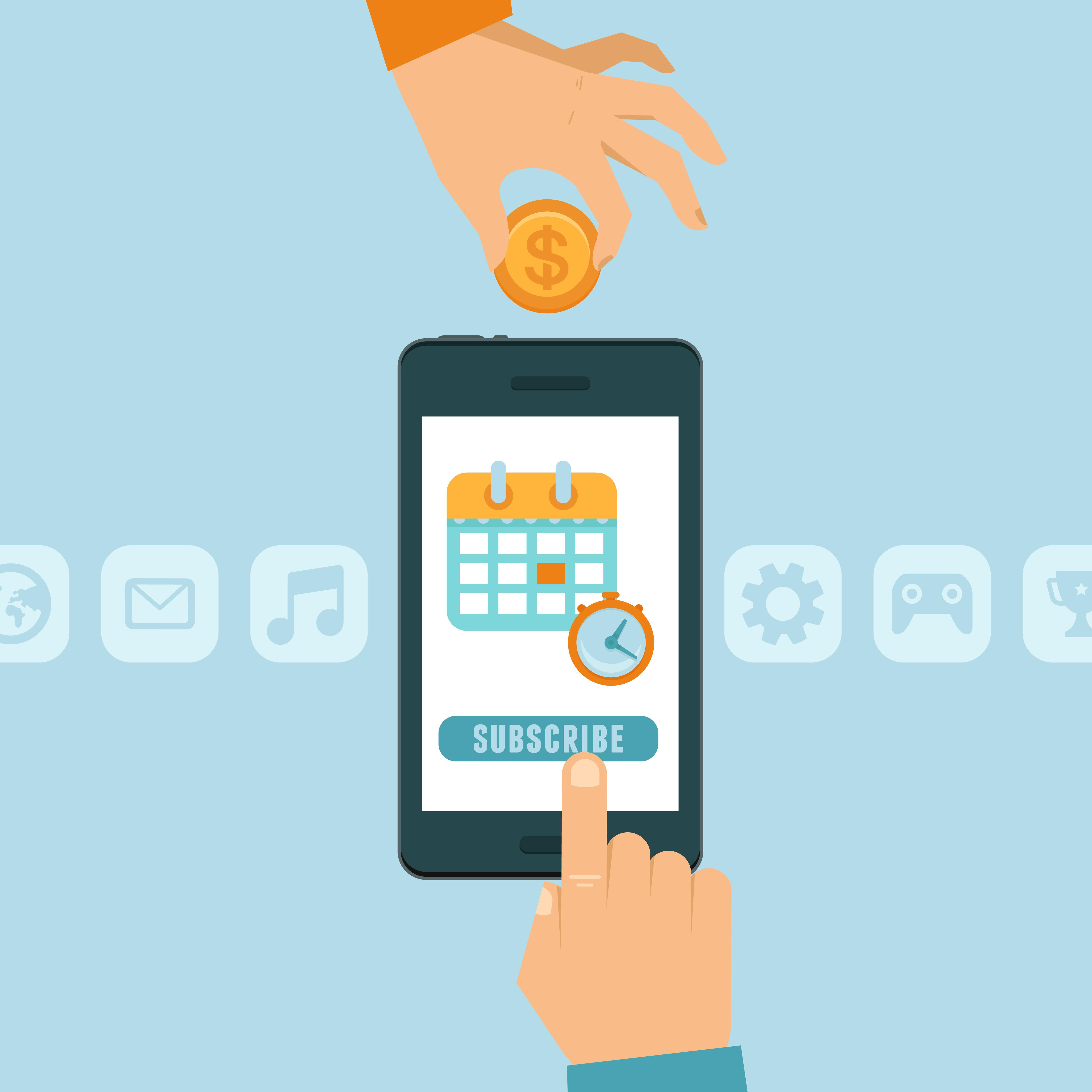Monetisation: six strategies for increasing average revenue per reader
Today, thankfully, readers have finally been burned too many times by too much “free” content that turned out to be a load of low quality codswallop. They are finally and increasingly willing to pay for great content from brands they trust about topics they are passionate about.
Those same readers are also increasingly willing to pay for all sorts of other quality products and services, providing publishers with revenues that are beginning to replace lost print and display advertising revenue.
And, truth be told, many of them would prefer to pay for content rather than be bombarded by big, annoying, privacy invading advertisements.
In our consulting work at media companies around the world, we push publishers to increase the average revenue per reader through the creative use of opportunities such as (1) events, (2) subscriptions/membership, (3) data services, (4) ecommerce, (5) niche products and (6) retail sites. After creating high-quality content, there is no more important task.
Let’s take a look at each of those revenue streams (a complete treatment with even more revenue opportunities can be seen in the Innovation in Magazine Media World Report available from FIPP here).
***INNOVATION Media Consulting, authors of the annual Innovation in Magazine Media World Report, help media companies around the world transform (read their Hanley Wood case study here) and present at conferences (FIPP included) around the world. Want them to present at your event? Contact John Wilpers at wilpers@innovation.media ***
1. Events

Here’s a media industry bromide: Events are insanely profitable for media companies.
Here’s a media industry head-scratcher: Despite those profit levels (averaging 30-40 per cent, according to the Local Media Association), events still only represent a single-digit percentage of media company revenues for consumer media companies.
In 2004, events represented just 2.4 per cent of revenue for B2C media; ten years later, events are “up” to 7 per cent, more than double but barely more than a blip, according to Folio’s annual B2B and B2C CEO surveys.
For B2B companies, events contribute more than twice that (15.6 per cent), also double what events added to the bottom line in 2004 (8.4 per cent), according to Folio.
Some media companies are proving the financial power of events. UBM, the giant media company that’s adopted an “events-first” strategy, reported revenues for the first half of 2016 at just over US$500m, with by far the largest chunk — US$405.8m — coming from its events business.
In a mid-2016 earnings report, UBM reported events produced profits of nearly 30 per cent.
At B2B publisher Penton, events are now the largest revenue stream. In the last ten years, print revenue and event revenue have changed places: Print has gone from the largest source (73 per cent) to the smallest (24 per cent), while events have gone from the smallest (16 per cent) to the largest (40 per cent), according to Penton CEO David Kieselstein speaking to Folio.
Kieselstein told Folio he sees a multiplier effect when migrating revenue to events and digital; the margins on both are far superior to print. In 2016, 52% per cent of Penton’s EBITDA will be events, 38 per cent digital, and just 10 per cent print, he said.
The average profit margin for a separately operated events division run by a media company is 40 per cent, and those divisions hit that number within as little as two years, according to Local Media Association (LMA) president Nancy Lane speaking at the 2016 Borrell Local Online Advertising Conference in New York.
Media companies have almost all the assets needed to run events: market penetration, brand recognition, diverse portfolios of products, creative people, an existing workforce, and community partnerships, according to Jason Taylor, Gatehouse Media‘s western US president, speaking to the Borrell Conference.
More than one-third of US publishers believe that events are the single revenue source most likely to increase in value in the next two years, according to Lesa Ukman, founder of marketing firm IEG.
“The event business is a wonderful business,” HMP Communications CEO Jeff Hennessy told Folio. “It’s proven, well-established, and it’s got its own ecosystem. It’s wonderfully diversified when you think about attendee revenue, sponsorship revenue, advertising revenue, exhibitor revenue — and, in the education business, you also have grant support.”
Events should be at least “the third leg of the media stool,” according to LMA’s Lane. Media companies should treat events as a separate business unit and allocate resources initially as if it were a startup. Here are Lane’s tips for events success as told to StreetFightMag.com:
- Separate teams are critical to success
- Bringing a cause or charity into events can increase ticket sales and sponsor revenue
- B2B events are big hits, as are events around dining and food
- Promotions and editorial content can be converted into events, e.g., best-of lists and contests can become banquets and awards presentations
- Start with a narrow focus on categories the media company “owns” e.g., New York magazine launched Vulture Festival based on the success of its entertainment niche: vulture.com (nearly 7 million unique monthly readers). Vulture Festival is a profitable venture with 18 ticketed events and 15 sponsors
- Event management software is essential
2. Subscriptions/membership

If a media company is doing its job — creating valuable content its audience cannot get anywhere else — readers should be willing to pay for it.
Some major media companies that have tried charging for content are succeeding, with reader payments beginning to provide a healthy percentage of their revenues. The Atlantic, New York Magazine, and Bloomberg Businessweek all experienced subscription revenue in 2016 that was in the neighbourhood of 60 per cent of total revenue, according to the Pew Research Centre.
In the newspaper world, three of the largest US newspapers, the Washington Post, Wall Street Journal, and New York Times, now charge for access. Nearly a third of US daily newspapers now have some form of fee for digital access, according to Pew.
Another major newspaper, the UK-based Guardian, grew from 15,000 to 100,000 paid digital “subscribers” in 2016 alone.
Calling it a membership programme, the company offered three tiers: Supporter (US$60/year); Partner (US$190/year); Patron (US$750). Each tier comes with increasing privileges, including tickets to Guardian events, discounts on Guardian offers and courses, and invitations to exclusive, behind-the-scenes functions.
Condé Nast and others offer memberships to high-end subscribers. The Condé Nast Wired Group (Wired, Ars Technica, and Backchannel) charges US$4,000 a year for access to in-person and web events with tech startups, access to other peer-to-peer events with people like themselves, bespoke newsletters, and other perks.
The National Journal is charging US$5,000 to US$50,000 a year, depending on the size of the organisation, for specialised research and tools plus networking events.
Slate offers Slate Plus to give members special access to its journalists and events for US$35 a year.
Yet another approach to gain reader revenue (and new audiences) is through enticements. In February, the New York Times partnered with the music streaming service Spotify to give new digital subscribers unlimited, free access to the premium version of the world’s largest music-streaming service for a year.
Spotify’s premium service usually costs $120 annually.
***Sign up for our weekly FIPP World newsletter to get stories like this in your inbox***
3. Data services

Publishers are sitting on a gold mine of customer data, but few monetise it.
Those who’ve tried have been surprised and some are seeing data-related revenue bring in as much as a third of all revenue.
The poster child for data as a revenue-producing service is B2B publisher Hanley Wood. Data now informs everything at Hanley Wood, from editorial decisions to long-term consultative marketing engagements, website development, lead generation and content marketing.
Hanley Wood hasn’t stopped there. President Peter Goldstone has expanded into providing data-as-a-service, offering database management services to help clients align customer acquisition, media, marketing, and events strategies.
As a result, Hanley Wood’s customers are “enlisting our talent, our expertise, our specialisation, our data services, and our data to help build more robust databases that they can leverage for marketing purposes,” said Goldstone.
Hanley Wood now considers its data services as the company’s central value proposition.
Hanley Wood still has its media and marketing services, but based on the change in its corporate tag line (“Where data drives action”), the company sees data as its future.
Goldstone told Folio magazine that one-third of the company’s revenues are tied to marketing services that now rely heavily on the database, which combines proprietary market research with customer engagement activity across all of the Hanley Wood brands. “Where the company used to be a collection of media and event brands, now the crown jewel is the database,” he said.
4. Ecommerce

Ecommerce is not new, but scaled, successful ecommerce for legacy publishers is new.
While digital natives like Gawker Media and Vox Media have succeeded for years, legacy publishers have mostly shied away.
Now, however, legacy media companies are jumping in with both feet, and none more flamboyantly than The New York Times.
With resources few can match, The Times dived into ecommerce in a very big way in the autumn of 2016 with the US$30m purchase of the extremely popular and successful ecommerce site Wirecutter and its sister site, The SweetHome.
Both sites have robust reputations for respected reviews and recommendations of technology and household products. Both retain scientists, technologists and other experts to review and often lab-test products before recommending them. It was that solid reputation and outstanding financial success (estimated US$200m 2016 sales) that appealed to the Times.
With Wirecutter and SweetHome, The Times acquired a massive collection of high-quality product reviews, adding to the service journalism The Times has been building in its own verticals: Cooking (recipes), Watching (TV and film), and Well (fitness and health).
Wirecutter and TheSweetHome also give The Times the wherewithal to expand ecommerce into many more verticals. “The Times is excited to think we can apply their approach for product recommendation to a lot of different spaces that they [Wirecutter and Sweethome] are not currently in,” NYT Beta development group vice president Ben French told Politico.
French said that the site is projected to generate about US$200m in sales this year, which would put its revenue around US$10m or US$20m. The Wirecutter’s conversion rate is particularly high, at about 15 per cent, he said.
Ecommerce is not limited to the really big media players.
Australia’s Fairfax Media launched an ecommerce site for quality Australian-designed products in the fall of 2016. Like The Times, Fairfax felt they had to acquire expertise, and they did so by hiring Trudi Jenkins, the co-founder of ecommerce startup hardtofind.com.au.
Now, as Fairfax digital commerce director, Jenkins hopes to double ecommerce sales in six months with a collection of more than 1,000 products ranging from art, clothing, and accessories to home wares and garden goods. Fairfax makes the experience appealing to its subscribers by giving them a 20 per cent discount.
TheStore.com.au is actually a platform for Australian artists, designers, manufacturers, etc. to sell their goods. “We don’t buy any stock. We don’t warehouse any stock. We basically create a platform for people to sell their products and we can take a percentage,” Jenkins told NewsMediaWorks.com. The sellers handle the filling and shipping.
Even single-title companies are getting into the ecommerce game. The editor in chief of 10 Magazine out of London, Sophia Neophitou Apostolou, launched her ecommerce site called 10 Curates in late 2016.
Going even further with ecommerce, UK-based Dennis Publishing (more than 35 magazines and websites) jumped on an opportunity to purchase online car dealer BuyaCar in 2014 and integrated the ecommerce business with its portfolio of automotive websites,
“We already had an audience of in-market car buyers and relationships with the car brands,” James Tye, CEO at Dennis, told The Guardian. “We saw a change in consumer habits and felt there was an ecommerce potential. The margin is sizeable and we’re leveraging a really important audience through our websites.”
After just three years, Dennis now sells nearly 200 cars a month and BuyaCar generates 16% of the company’s total revenue, according to The Guardian.
BuyaCar and the other Dennis ecommerce ventures now generate more than half of the company’s digital revenue, according to Tye. Ecommerce has become a major success story for the company.
If you’re a B2B media company, you have even more ecommerce options.
For B2B media, the top ecommerce items are subscriptions and renewals, followed by paid webinars, workbooks, near real-time data, training and continuing education credits, market reports and in-depth regional reports, archive site licenses, and of course, books and CDs, according to Andy Kowl, senior vp of publishing strategy for the enterprise publishing system company ePublishing Inc.
Writing in PubExec.com, Kowl offered eight tips for B2B publishers looking into ecommerce:
1. Is ecommerce integrated seamlessly wherever it is needed? If you are sending buyers to Amazon or any separate shopping cart, you are behind the times. Each additional step buyers must take will lose you some of them.
2. Discounts are key. Make sure you provide discounts to various “interest groups.” If you have “members” of any kind, member discounts are a must, and create other discounts as well.
3. Have a way for marketers to easily create “offers” — i.e., “Buy these two and get a …” or whatever.
4. The shopping cart must include “you may also like” or “those who purchased this also purchased” options. I was told more than half of Amazon sales come from these recommendations.
5. Contextual selling: Make sure you have a strong taxonomy so when people are viewing related content on your site they will see the most relevant offers.
6. Sell some of your content by article or chapter, rather than the whole publication. I may not want your market report for US$1,995, but the section on telematics may feel like a bargain for US$395.
7. Give your members and customers the ability to manage their purchases.
8. Lock down your archives or certain high-value, ongoing coverage to sell via site licenses. Enable corporate, university, or library buyers to access the content for an annual fee, either organisation-wide or by seat.
5. Niche publishing

If Kickstarter campaigns for new niche magazines and a growing list of new niche publications coming out of legacy publishers are any indication, niche is the future. Or at least one very popular and profitable option.
“Instead of one-size-fits-all sites, [publishers are] increasingly launching single-subject verticals focused on advertiser-friendly topics like health, technology and food.” according to Digiday. “Everyone is getting in on the action.”
Just this spring alone, there has been a flurry of niche site launches.
In late May, The Times in the UK launched The Brief Premium, piggybacking on its popular legal coverage. The Brief Premium provides the latest intelligence for the legal community with daily news, practice area investigations, podcasts and exclusive access to industry leaders. After a free two-week trial, it costs £4 per week or £1 for existing Times/Sunday Times subscribers.
Also in May, Time Inc. announced plans to launch a stand-alone site called “The Pretty” targeting makeup and beauty fans with videos on social networks. Time is hoping it can leverage the fans of its female-focused brands to share the short videos of hair and makeup tutorials, tips and products on Facebook and Instagram.
Pretty was not Time’s first niche launch this year. In March, it launched the niche site, Well Done, featuring recipe videos that came with a built-in revenue source — a sponsorship from Kraft.
Hearst jumped on niche publishing this spring, too. In early May, Hearst unveiled Delish Kids, a site featuring videos, how-tos and recipes made by children, as well as Delish TV.
Also in May, The New York Times launched “Open Thread,” a weekly newsletter covering how clothes communicate ideas, culture and identity.
In April, GQ launched a dedicated vertical T&E (Travel & Eats) which followed its launch in late 2016 of Best Stuff, a product recommendation site.
Legacy publishers aren’t the only ones betting on niche publishing. Mic, the millennial-focused digital media firm launched seven new niche sites this spring with two more coming soon:
1. Slay (women’s issues)
2. Payoff (personal finance)
3. Hype (pop-culture)
4. Navigating Trump’s America (politics)
5. Strut (style and beauty)
6. The future is now (tech)
7. The movement (social justice)
8. Multiplayer (gaming)
9. Out of office (food and travel)
In early 2017, NBC News launched three verticals.
Over the last six months, The New York Times launched Cooking, Well, and Smarter Living.
In early 2017, The Huffington Post launched a social-first health brand (The Scope) and a teen girl-focused newsletter (The Tea). Last December, The Huffington Post launched Canceled Plans, a Facebook-only page for introverts. HuffPo has seven Facebook-only communities including Tomorrow, Inshallah (for millennial Muslims), Pack Light, Go Far (for women who love to travel) and There’s More to the Story (local politics).
The rise and success of so many niche sites indicates readers want specialisation when they’re searching for news and information, about.com CEO Neil Vogel told Digiday.
As publishers move into niches, the old verticals like food and health and tech are seen as too broad. Readers’ interests are getting much more granular, so publishers must go even narrower, too. The Huffington Post’s sites for introverts and millennial Muslims are two good examples of getting narrow. Instead of medical, for example, sites could focus on specific conditions such as diabetes and psoriasis.
6. Retail revenue
Surprise! GLAMOUR’s got a pop-up shop! Join us for a week of amazing celebrity guests (hi @millsmackintosh),… https://t.co/V7vTO2Wral pic.twitter.com/1L7g8jyEob
— British GLAMOUR (@GlamourMagUK) January 7, 2017
Going the retail route serves two masters: revenue and brand recognition.
Pop-up stores tend to draw a lot of media and consumer attention, and they drive sales of brand and partner products.
Just a few months ago in January, 2017, Glamour UK announced they were going to brighten grey winter days with a pop-up shop in London.
For four days, Glamour offered consumers prizes, celebrity guests, “must-watch” clinics, goodie bags worth almost $US200 for new subscribers, limited edition Glamour sweatshirts, and “random acts of Glamour kindness”, the editors said.
For their fans outside of London, Glamour made the pop-up come alive virtually. “Don’t worry if you’re not in London: all our interviews and beauty and fashion clinics will be aired as Facebook Lives at facebook.com/glamourmaguk, and we’ve got fabulous giveaways on our social channels,” wrote the editors.
In November, 2016, another lifestyle magazine, US-based Southern Living, opened a permanent bricks-and-mortar store, the first of what the company said would be many such stores launching throughout 2017.
The store highlights local southern US artists and producers (many of whose products won Southern Living awards), as well as the magazine’s own products, such as its cookbooks.
Another London-based magazine and website, the celebrity, youth culture, film and music title Wonderland, opened a 1,076 square feet pop-up shop in London’s St. James neighbourhood.
In its first foray into retail, the edgy title offered clothing, accessories, homewares, and beauty products from brands the publication has featured over the years, including Sibling, Markus Lupfer, Stussy and Nicola Formichetti’s Nicopanda.
***INNOVATION Media Consulting, authors of the annual Innovation in Magazine Media World Report, help media companies around the world transform (read their Hanley Wood case study here) and present at conferences (FIPP included) around the world. Want them to present at your event? Contact John Wilpers at wilpers@innovation.media ***
More like this
From reach to monetisation: Axel Springer on its global investment strategy
Seven monetisation habits of successful magazine companies
Monetising directly from consumer: three tech experts share their thoughts
How Hearst UK is developing ‘Events-as-a-Service’
One company’s ‘blueprint’ for magazine media to thrive








